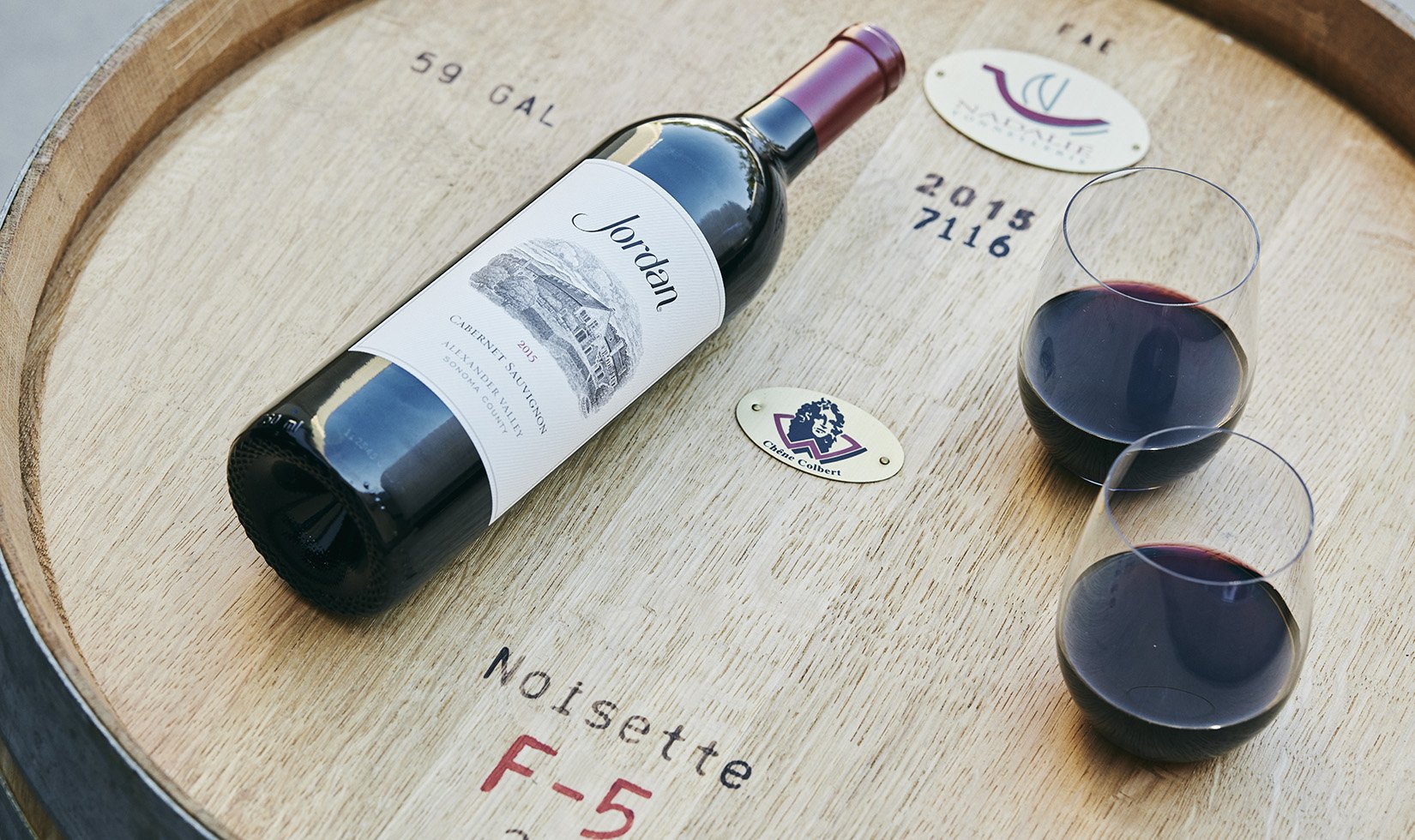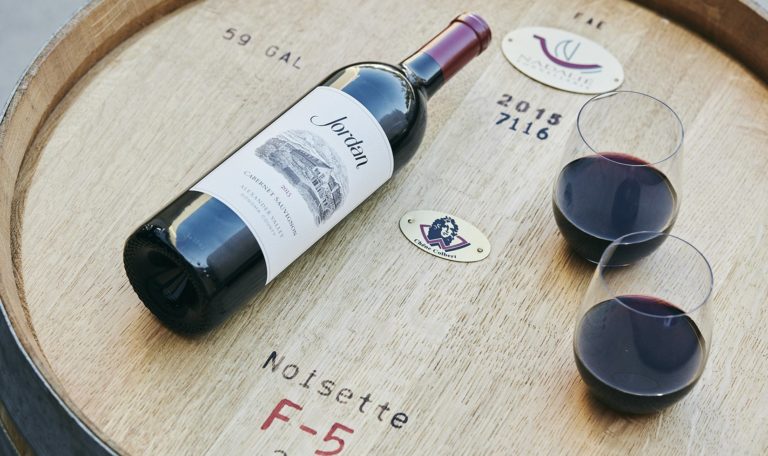Since our founding in 1972, Jordan Winery has been an homage to First Growth Bordeaux. The French mindset has been infused into all aspects of the winery, from the design of the chateau and dining room to the grapes planted at the estate and the methods used to craft old-world-style wines. With the release of the 2015 Jordan Alexander Valley Cabernet Sauvignon on May 1, we come full circle by aging our singular red wine exclusively in French oak barrels for the first time in the winery’s history. It’s serendipitous that 2015 also marks Winemaker Rob Davis’s 40th harvest at Jordan.
To pay tribute to the wine’s European inspiration and its U.S. roots, the inaugural 1976 Jordan Cabernet Sauvignon was aged 50/50 in French and American oak. The shift in barrel philosophy didn’t begin until 2005 when John Jordan took the reins from his dad and asked Rob what could be done to elevate quality while staying true to Jordan’s elegant house style. Rob created a prototype of his dream Jordan Cabernet Sauvignon from the 2005 vintage, using only the best tanks from the top vineyard blocks and aging them entirely in French oak barrels—some of which were hand-picked by Davis at a barrel auction in France. When John tasted the wine, he loved it so much that he gave Rob approval to explore moving Jordan’s entire cabernet production to the super-blend model.
Rob started with the vineyards. He began changing Jordan’s grape sources beginning in 2006, focusing on finding vineyards with the ideal soils and locations for growing cabernet sauvignon and merlot grapes with a finer, natural tannin profile that reach optimal maturity at healthy sugar levels of around 24 Brix.
“French oak, with its greater array of complex tannins and much greater porosity, lends itself much more to the black fruits and deeper, richer flavors we’ve achieved through new grower vineyards,” says Rob, the longest-tenured winemaker in Sonoma County who will begin his 44th harvest at Jordan this fall. “Once we stopped including grapes from the estate valley floor and hillsides in our blends, we found that the American oak was overpowering the beautiful dark fruit in the young wines while French oak elevated the fruit.”
Known for bringing aromas and flavors of dill, coconut and cedar to red wines, American oak played a vital role in Jordan Cabernet Sauvignon for decades, masking the herbaceous character in the wine—a result of the challenging soil types found in many estate vineyard blocks—grapes that are now sold to other wineries. After six harvests with the new fruit-sourcing philosophy, the flavor concentration and natural tannins were so beautiful in the young wines, Rob had his winemaking team put together two blends from the 2012 vintage: one with the standard American and French oak medley and one aged solely in French oak to share with John. In a blind tasting, everyone chose the 100 percent French oak blend. John gave the winemakers the green light to move the entire Jordan Cabernet Sauvignon production to all French oak aging in 2012. The full transition took another three vintages, as new American oak barrels, which are filled 2-3 times during their lifespan in the Jordan cellar, completed their cycle.
“If we’d continued with our old barrel regime,” Rob says, “our cabernet would taste less refined and out of balance.”
The 2015 Jordan Cabernet Sauvignon ($57) is a blend of 77 percent cabernet sauvignon, 15 percent merlot, 6 percent petit verdot and 2 percent malbec, created from 60 different vineyard blocks—a combination of 13 different growers and Jordan Estate. Eighty-five percent of the final blend is grower fruit. The wine aged for 13 months in 47 percent new and 53 percent one-year-old barrels before gaining added complexity through nearly two years of bottle age. Primarily medium-toast barrels from six French coopers were selected based on blind tastings and the vintage’s flavor profile.



